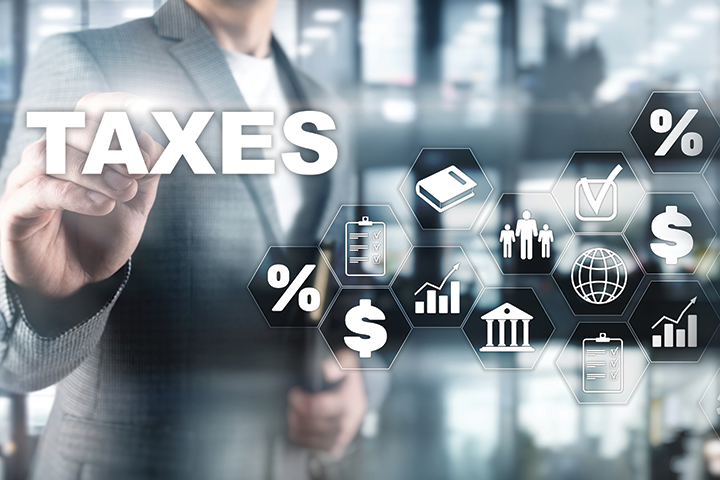Turn Tax Deductions Into Sales Tools
The full deduction offered by Section 179 can not only save foodservice operators money but also free up their budgets for added purchases or upgrades.

By Brittney McNeal
Account Executive
Centra Culinary Finance
Let’s be honest. When most folks hear “tax deduction,” they don’t exactly jump out of their seats. But in the foodservice world, where margins are tight and repairs are constant, a good deduction can make a major difference to operators — and open the door for further investments.
Enter Section 179, the industry’s most underutilized sidekick. It is the tax code equivalent of that employee who always shows up, never complains and quietly makes everyone’s life easier. For foodservice equipment and supplies dealers, it’s the go-to tax tool for keeping more dollars in the business and fewer in Uncle Sam’s pocket, whether you’re helping operators make their next equipment investment or planning your own upgrades.
Let’s break it down in real terms, the way we actually talk in this business.
What Is Section 179?
In simple terms, Section 179 lets businesses deduct the full purchase price of qualifying equipment in the year it’s put into use. Not depreciated over five years. Not a little here and there. We are talking 100 percent deduction, right away.
If you bought it for your business and it’s up and running before Dec. 31, it probably qualifies. For foodservice folks, that includes everything from ovens, dish machines, walk-in refrigerators or coolers, and point-of-sale systems. It can also be food trucks, office equipment and even delivery vehicles.
It almost as if the IRS is saying, “Hey, you bought something useful? Go ahead and keep more of your money.”
Who Is This For?
Everyone can claim a Section 179 deduction. No, seriously. Everyone.
Restaurant owners and operators? Of course. Distributors and dealers with warehouse equipment or test kitchens? Absolutely. Caterers with food trucks? You bet. Your cousin who just opened a juice bar with three refurbished blenders and a dream? Yes, even him.
Section 179 is one of those rare tax breaks that is truly accessible. It’s not buried in red tape or limited to massive corporations with dedicated tax departments. It’s a benefit aimed at those of us who are building kitchens, running service calls and selling equipment one carefully crafted quote at a time.
How Much Can You Deduct?
| Total Equipment Purchases | Amount Over $4 Million | Section 179 Qualifying Deduction |
| $4,000,000 | $0 | $2,500,000 |
| $4,500,000 | $500,000 | $2,000,000 |
| $5,000,000 | $1,000,000 | $1,500,000 |
| $5,500,000 | $1,500,000 | $1,000,000 |
| $6,000,000 | $2,000,000 | $500,000 |
| $6,500,000 | $2,500,000 | $0 |
Here is where Section 179 gets exciting. For 2025, the deduction limit is up to $2.5 million. That is not a typo. That is real, IRS-approved money.
There is also a spending cap of $4 million before the benefit starts to phase out, with a full phase out at $6.5 million. This means foodservice operators can deduct a walk-in, a full cookline, replacement refrigeration, and even that new slicer they’ve been eyeing all in one year. If you are investing in your business, Section 179 is here to support you. Just keep those receipts and maybe use some of your refund to send your accountant a thank-you muffin basket.
Can I Deduct More Than One Item?
Absolutely. Section 179 does not care if you bought one piece of equipment or 15. If it qualifies, is used for business and is placed into service that year, it can be deducted.
This can be a great opportunity for dealers. If your customer is opening a second location, upgrading their prep station or finally pulling the trigger on a ventless fryer, they can write it all off. You can help them do it with confidence and even suggest they upgrade that undercounter ice machine while they are at it.
How Do You Apply For the Deduction?
The write-off process is surprisingly straightforward. Your customer just needs to file IRS Form 4562 with their tax return. The form asks for a description of the equipment, the cost and the date it was placed in service. That is it.
This is where dealers can truly shine. You can help by providing a clean, itemized invoice, serial numbers, product categories, and simple paperwork your customers can hand straight to their accountant. A well-timed reminder in the fall — “Hey, don’t forget this convection oven qualifies for Section 179” — can position you as a trusted partner, not just a transaction-minded vendor.
How Can Dealers Support This?
Your customers are busy. They are training staff, ordering food, managing payroll, and trying to figure out why their walk-in refrigerator smells like hot pickles. That is why your support matters. Equipment and supplies dealers can help clients maximize their deduction by showing them how Section 179 can be incorporated into their buying decisions. That can include encouraging customers to plan purchases earlier in the year instead of waiting until the end, allowing them to get a better idea of how much they stand to save — and potentially unlock room in the budget for more upgrades. When doing this, don’t forget to check in with the client’s accountant early in the sales process. A five-minute call can clarify what qualifies and ensures customers follow through with the deduction filing.
Dealers can also bundle orders in smart ways to maximize deductions. For example, if a customer expects to buy a new combi oven in December and a replacement fryer the following February, bundling both purchases together can create larger tax savings. In this way, the deduction can become another tool in your sales arsenal.
The potential for value-added service doesn’t end once the sale is made. By organizing receipts and product information, dealers can function as a resource during tax filing season. Helping your clients leverage these deductions is not only good service — it’s smart selling. When customers realize how much they can write off, that expensive combi oven suddenly looks like a bargain.
What About Other Tax Deductions?
In July, Congress passed the largest tax reform since 2017 with the One Big Beautiful Bill Act (OBBBA). From a deductions standpoint, the legislation did not reinvent the tax wheel, but it did polish the rims. The bill’s changes to Section 179 are a great example of this polishing. Thanks to the OBBBA:
- The Section 179 deduction limit doubled to $2.5 million.
- The phase-out threshold rose from $3.13 million to $4 million, with full phase-out at $6.5 million.
- These limits are now indexed to inflation in future years.
The bill also extended bonus depreciation and added clarity for energy-efficient upgrades and technology-heavy installations. As a result, if your customer is investing in low energy refrigeration, heating, ventilation, and air conditioning improvements or smart kitchen controls, they may qualify for even more write-offs.
Still, the meat and potatoes of equipment-related tax savings are still Section 179 and bonus depreciation. The OBBBA just brought some extra seasoning, especially for operators focused on sustainability or automation.
Can Section 179 Support Additional Purchases?
Yes, and this is the part that really matters to dealers. When customers see the amount they can save on taxes, they tend to think bigger. Instead of replacing just a griddle, they might also upgrade their char broiler and steam table. Rather than stretching out a purchase over two years, they go all-in because they know the IRS will reimburse part of the bill.
Dealers can also create Section 179 cheat sheets, bundle promos or year-end marketing campaigns that remind customers: “You have still got time to write this off.”
Section 179 is not merely a tax benefit. It’s it a tool for smarter, more confident growth. It enables restaurant owners to invest in the equipment they actually need and helps dealers to be seen as strategic partners.
If you are not already talking to your customers about Section 179 deductions, now is the time. If you are, keep going. Add it to your sales emails, your quotes and your end-of-year touchpoints. Be the person who not only gets the order but saves them thousands along the way.
At the end of the day, what makes dealers stand out isn’t just the equipment they sell. It’s their ability to help people build restaurants that work, grow and thrive. Who wouldn’t want to be the person who saves the day and the deduction?
About the Author
Brittney McNeal is an account executive at Centra Culinary Finance, a nationwide equipment financing company and a FEDA business services member. Centra has more than 40 years of management experience in the equipment finance industry. McNeal can be reached at bmcneal@centrafunding.com. Learn more at centrafunding.com.

